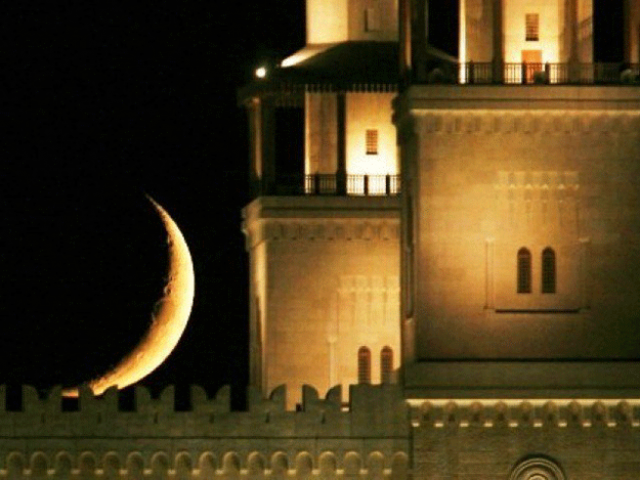Professor Dr. Shahid Qureshi, a renowned astronomical scientist and former chairman of the Department of Astrophysics and Planetary Science at the University of Karachi, predicts that there is a high likelihood of sighting the moon on March 22, corresponding to the 29th of Shaban. This indicates that the first day of fasting for the holy month of Ramazan will be on March 23.
Dr. Qureshi stated that the ‘birth’ of the Ramazan moon will occur on the night of March 21 at 11:13 pm, and it will remain on the horizon for 47 minutes, setting at 7:30 pm on March 22.
At the time of sunset, the crescent will be 10 degrees above the horizon and the illumination will be about 0.9 percent, while the age of the crescent will be 19 hours and 30 minutes.

It is worth noting that the moon’s distance from the earth will only be 382,000 kilometers.
Dr. Qureshi stated that based on this information, the crescent will be visible with binoculars on the evening of March 22 from the southern regions of the country, including Karachi and Gwadar.
However, it will be challenging to see the crescent with the naked eye.
Moreover, He stated that if people observe the first day of fasting on March 23, they will not be able to sight the Eid moon on the evening of the 29th of Ramazan.
However, if they observe the first day of fasting on March 24, the Eid moon will be clearly visible on the evening of the 29th of Ramadan.
Pavan Manzoor is an experienced content writer , editor and social media handler along with a track record of youth-oriented activities in Pakistan and abroad. She was selected as a fully-funded delegate as a leadership fellow in Turkey. She also led a team of 5 volunteers at the week-long Young Professionals Fellowship in Maldives. She is also a member of the Youth Standing Committee on Higher Education.










